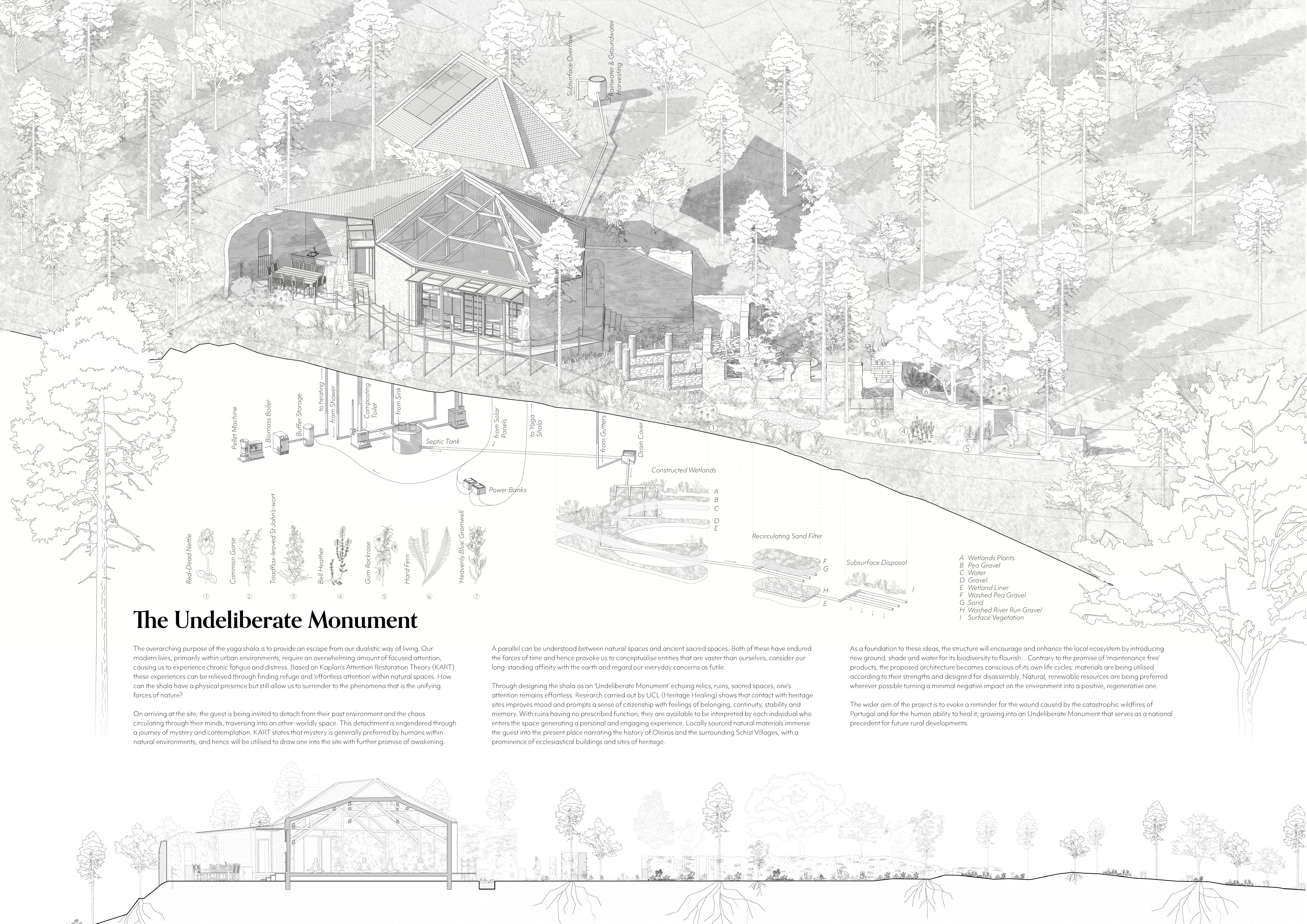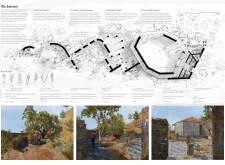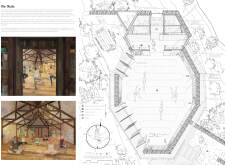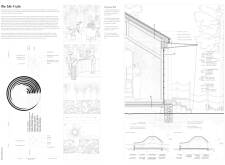5 key facts about this project
The central function of this project revolves around wellness and mindfulness, with dedicated spaces designed for activities such as yoga, meditation, and community gatherings. The layout is carefully planned to promote flowing movement through the site, allowing individuals to transition effortlessly between indoor and outdoor experiences. This planning reflects an understanding of how architecture can influence the psychological and emotional states of its users, prioritizing mental health and well-being.
Key features of the project include "The Shala," a multipurpose space that is integral to the overall experience. This area is designed with ample natural light, facilitated by large windows that invite views of the surrounding landscape. The wide, open layout adapts to various community activities, reflecting the emphasis on flexibility in use. The architecture also incorporates a unique mycelium wall, which not only adds aesthetic value but also exemplifies an innovative approach to sustainable material use. Mycelium, derived from fungal networks, offers high insulation values and promotes a cycle of reuse, reinforcing the project's commitment to sustainability.
In addition to the primary building elements, the use of locally sourced materials is a significant aspect of the design. Timber, schist stone, and glass are prominently featured, each chosen for their durability, thermal efficiency, and ability to blend seamlessly into the environment. The careful selection of reclaimed materials further reduces the carbon footprint, aligning with principles of sustainable development. This attention to materiality enhances the overall durability of the structures while minimizing ecological disruption.
The landscaping surrounding the project plays an equally vital role in the overall design approach. Native plants are intentionally used throughout the site, promoting biodiversity and ensuring low maintenance needs. Pathways meander through this lush terrain, creating interactive circuits that encourage exploration and connection with nature. These paths are not simply functional; they serve as meditative journeys that enhance the sensory experience of the site.
The architectural design encourages engagement with the environment, inviting community members to participate in activities that foster connection to nature and to each other. The blending of the interior and exterior spaces reflects a contemporary understanding of architecture that values experiential qualities alongside functional needs. The project stands out for its cohesive approach that values both aesthetic beauty and ecological responsibility, resulting in a thoughtful narrative of design.
As you explore the project presentation, take the opportunity to delve deeper into the architectural plans, sections, and designs that illustrate these concepts further. This exploration offers valuable insights into how such innovative architectural ideas have been realized and what they signify in the larger context of contemporary design. Engage with the nuances of this project to appreciate the full scope of its architectural significance and its potential influence on future developments.


























